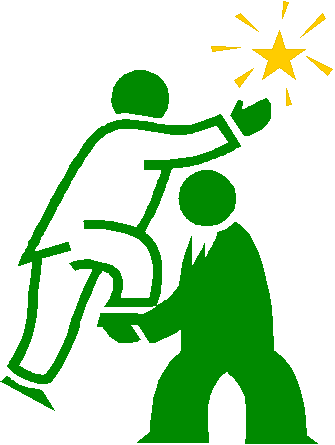Does a need to improve leaders’ coaching behavior show up on just about every employee engagement survey, 360? assessment, or training needs assessment you conduct?
Maybe you’ve even invested heavily in development programs to help leaders learn to be better coaches. So why don’t they stick?
Perhaps it’s because “coaching” connotes a wide range of practices that often are not differentiated at the various levels of leadership. In my experience, the word “coaching” is used as an intervention for everything from one-way feedback and corrective action, to high potential and executive development.
To make coaching a leadership best practice, organizations must define what coaching consists of at every level, and ensure all leaders experience the positive benefits.
When applying coaching as a talent strategy within organizations, it’s important to consider it on three levels, taking into account the nature of positions, as well as who the coaching recipient is and where they are in their career trajectory. There are three levels, and three sets of needs.
Level 1: Front-line
At this level, coaching consists of establishing performance expectations, identifying improvement opportunities, reinforcing success, and supporting growth and development. Each of these practices are most effective when facilitated in a collaborative, dialogue-based style. And, as Gen Y/Millennial individuals are becoming the primary recipients, a participative style is even more important.
A few years ago, I led a project in which more than 300 front line leaders participated in an intensive, three-day program called “Advanced Developmental Coaching.” The learner to facilitator ratio was an expensive 6:1, enabling all leaders to get direct, real-time feedback from an expert during skill practices.
The experience proved what we might suspect but don’t always address. Even though supervisor-level leaders might understand and buy-in to the need for collaborative coaching, they often lack confidence to navigate in ambiguity. Asking questions to engage the coaching recipient seems logical, but in practice it’s scary. It can’t be scripted.
One part of our skill practice required the coach to allow the recipient to self-assess before the coach offered feedback. Repeatedly, even though they had been advised otherwise and saw peers make the same mistake, participants led with critical feedback instead of facilitative coaching — “Here’s what I think you should have done differently.”
Level 2: Middle-manager
This level often makes the mistake of viewing the coaching process the same way they expect front line leaders to conduct it. But at this level, they are coaching other leaders; they are coaching coaches.
While there can be a need for performance improvement discussions at every level, mid-level leaders are responsible for actively retaining and growing key talent. This means they need to be skilled at identifying and understanding the unique needs and drivers of individuals on their teams. The conversations range from simply “checking in” to ensure engagement and identify obstacles, to career development and change management.
Middle managers also would like to receive this kind of coaching from their leaders, though it’s unfortunately rare. Many executives don’t see themselves as “coaches,” yet it has so much impact.
Level 3: Executive
For high potentials or leaders in transition due to promotions, an executive level coach helps the individual evolve his or her natural style, assess teams and stakeholder relationships, set goals, and think through strategic leadership issues.
At this level, coaching becomes a combination of acting as a sounding board and helping the leader look at, and mitigate, his or her own flaws that become accentuated at that level.
As an external executive coach, I find that the openness varies greatly based on how coaching is viewed in the organization. For most, it’s a developmental gift, and a much-needed resource. Some view it as a sign of weakness and the work has to address that issue first.
Next steps
What can HR and Talent Management professionals do?
- Define what coaching looks like at every level of your organization, including what’s it’s not.
- Scrutinize the messages your coaching curriculum conveys. Are you building the collaborative dialogue skills required to be an effective coach, or are the methods outdated or even manipulative? Are you offering only a one-size-fits-all solution?
- Address the real barriers to making coaching a leadership best practice. Are you confusing coaching execution issues with training solutions, or are you acting as a change leader, ensuring behavioral competency and application?
- If you utilize internal or external dedicated executive coaches, elicit feedback as to the organizational obstacles to the work, and gain feedback from participants about the experience.
What have been your coaching successes and shortcomings? Have you considered the importance of coaching at different levels, in lieu of a one size fits all approach?
